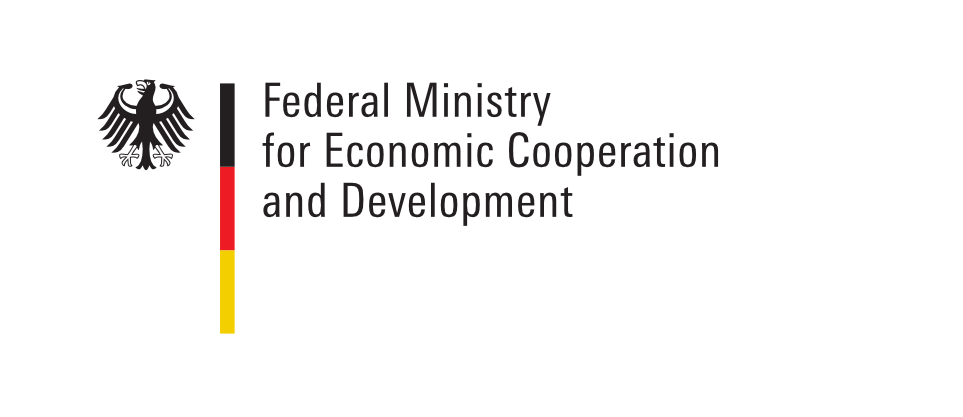- DE |
- EN
Repurposing public buildings from the 1960s and 70s
Overview
Public buildings from the 1960s and 70s are a common feature of many cityscapes around the world. Today, they no longer meet the 21st century’s technical, energy and aesthetic requirements, and are frequently demolished and replaced with new buildings. However, they have great potential for reducing emissions in the construction sector, thereby contributing to climate change mitigation. Thanks to their flexible floor plans, buildings from the 1960s and 70s – the modernist period – can be adapted to today’s requirements, often with additional benefits for cities and their inhabitants. It is high time we preserved these buildings, and used the grey energy embodied within their concrete and steel in a socially, economically and environmentally sustainable way.
This paradigm shift was the focus of the ‘2nd Hands on Public Buildings’ discussion event held on 24-27 September 2024, hosted by Connective Cities, in cooperation with the Berlin Senate Department. Around 30 municipal practitioners from Germany, Kenya, Montenegro, the Palestinian territories, Zambia and Ukraine, came together to discuss approaches to, and challenges inherent in, sustainably repurposing public buildings from the 1960s and 70s, and to develop some project ideas.

Program
The participants focused on the following questions: (1) How can buildings be preserved? What future (interim) use may be possible? (2) How can economic, social and environmental sustainability criteria be taken into account? (3) What innovative construction methods would be suitable? (4) What is the best way to design this process, which stakeholders need to be involved, and how can they be persuaded to support a project?
The attendees – urban planners, architects and other municipal practitioners – presented examples of good practice, and worked together to develop some project ideas, including one for the interim use of a vacant hotel in the centre of Nairobi.
Participants visited the ‘Haus der Statistik’ on Alexanderplatz, in the Berlin Mitte district. This 45,000 m² building complex, which has stood empty since 2008, is currently being converted into spaces for art, culture, social activities, education, and even affordable housing and a new town hall.
They then made a second excursion to Tempelhof Airport, which was closed in 2008. The airport building – constructed between 1936 and 1941, but never completed – is regarded as the largest architectural monument in Europe. Plans are now under way to develop it into an experimental space and new urban quarter for art, culture and the creative industries.
Keynotes
Lars Löbner and Moritz Theloe from the Berlin Senate Department for Urban Development, Construction and Housing described how around 220,000 new residential units would be needed in Berlin by 2040. They presented the Berlin Urban Development Plan for Construction, which aims to achieve this goal, and includes a vision for reuse of older buildings. Its focus is on sustainable methods of housing provision, with regard to energy usage, mobility and efficiency. They also took a look at Berlin's post-Second World War history of reusing and adapting public buildings.
Nevena Delibašić from the Design And Planning Department in the city of Nikšić in Montenegro gave a presentation on the renovation of the ‘House of Revolution’. This architecturally striking building complex was begun in 1978, but never completed. Then, in 2021, new plans were developed, and part of the ruined building was refurbished as studios for a TV and radio station, opening in September 2024.

Presentations
The participants presented several projects showcasing the application of various approaches to the repurposing of older buildings in Berlin (Germany), Bremen (Germany), Drohobych (Ukraine), Greifswald (Germany), Hebron (Palestinian territories), Cologne (Germany), Lusaka (Zambia), Nairobi (Kenya) and Regensburg (Germany).
Feasibility studies are currently being carried out in Bremen, analysing a variety of options for repurposing a multi-storey car park dating from the 1970s in the city centre. Options include housing and office space. In Lusaka (Zambia), the city authorities want to prevent the demolition of old community centres, and set up centres for early-years education.
The projects presented:
- House of Revolution (Nikšić, Montenegro)
- Conversion of the ‘Katharina’ car park (Bremen, Germany)
- ‘Haus der Statistik’ (Berlin, Germany)
- ‘Buch – Am Sandhaus’ (Berlin, Germany)
- Conversion of an existing building into a third town hall (Regensburg, Germany)
- ‘Flow-Tower’ - Conversion of an office block into housing (Cologne, Germany)
- Reuse of a vacant hotel (Nairobi, Kenya)
- Renovation of apartment buildings (Drohobych, Ukraine)
- Refurbishment of the town hall (Hebron, Palestinian territories)
- Sustainable modernisation of apartment buildings (Greifswald, Germany)
- Preservation of community centres (Lusaka, Zambia)
Results
Repurposing existing older buildings pays off from an environmental point of view, because a great deal of grey energy – or, as it was expressed more positively at the event, ‘golden energy’ – is embodied in these buildings. There is, however, insufficient awareness of this, and a need for positive examples to be publicised – such as the renovation of the venue for this dialogue event: the headquarters of the Berlin Senate Department for Urban Development, Construction and Housing, built in the 1950s.
Repurposing and converting existing municipal buildings cannot happen without participation from the population. In particular, future users, neighbours, and civil society must be included in the planning stages. Often, it is civil society that is the driving force behind using a building as a creative space – as was the case with the Haus der Statistik in Berlin.
Local authorities must always take into account aspects such as: preserving architectural heritage; energy efficiency; cost-effectiveness; and the technical constraints on conversion. For example, when deciding whether to demolish or renovate a building, it would be helpful for local authorities to have a tool to hand that would speed up the planning process and ensure transparency.
Repurposing and converting large building complexes requires comprehensive and time-consuming planning and big budgets. It can therefore often make sense to consider interim use, or to only renovate individual parts of a complex as an initial step.
This dialogue event was the first in a series of activities focusing on the use of older public buildings as part of the Connective Cities learning process. An online workshop and delegation visits are planned for the coming months.

Report
2025 - Repurposing modernist public buildings from the 1960s and 70s
Author: Susanne Reiff
Documentation of the Connective Cities dialogue event from 24 to 26 September 2024 in Berlin.



















